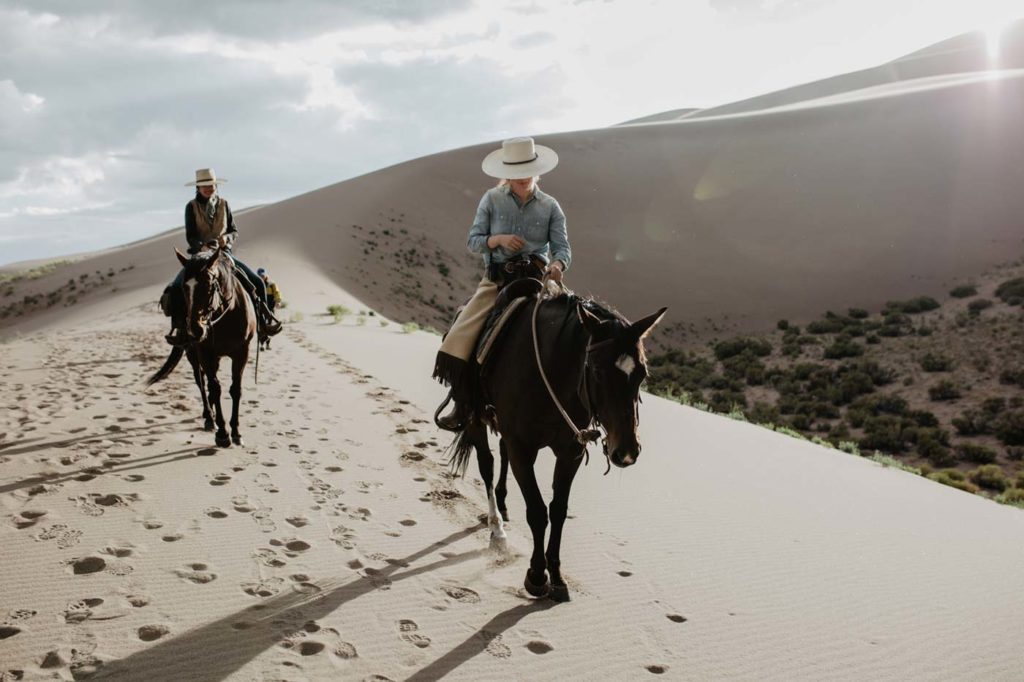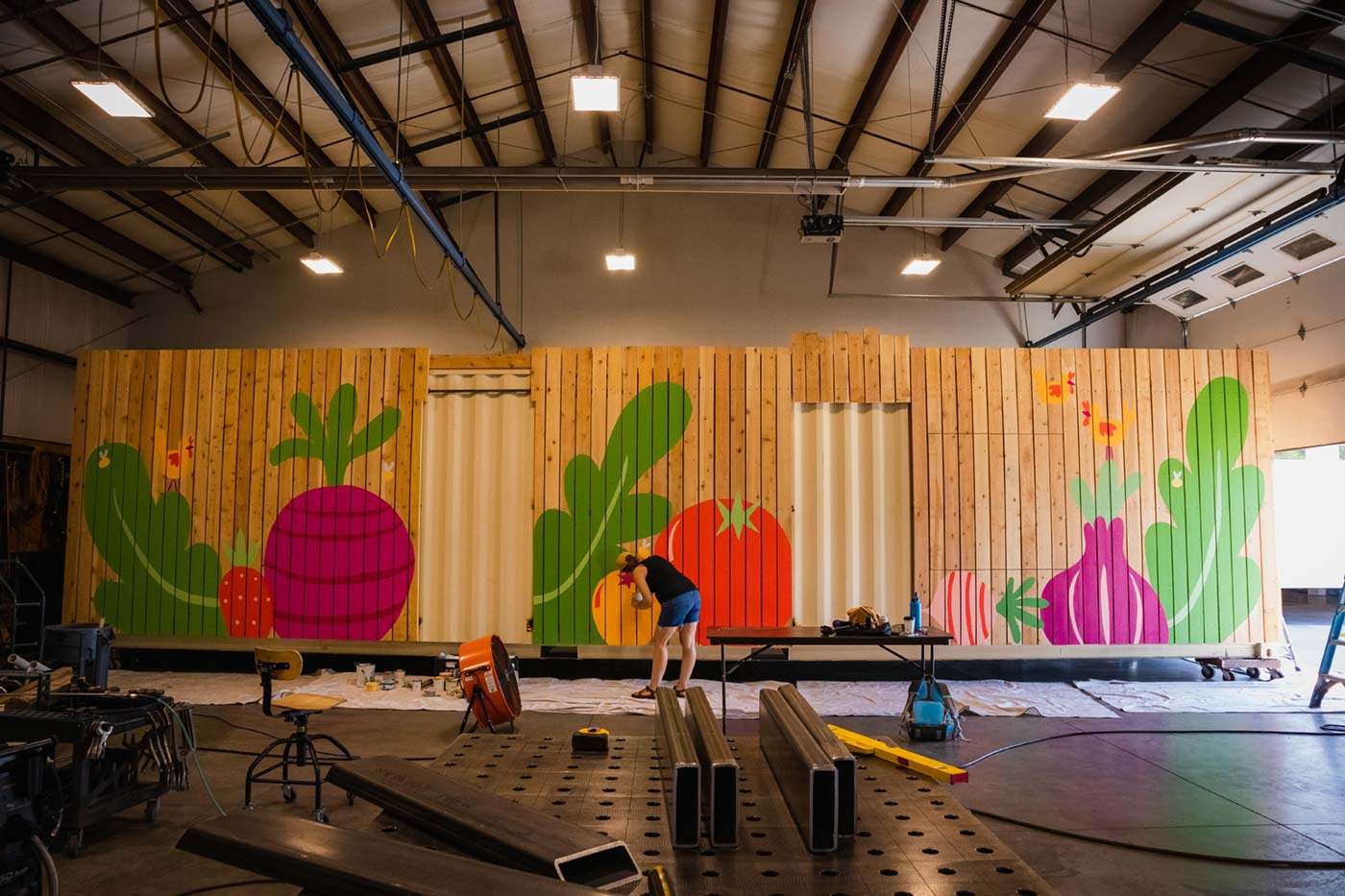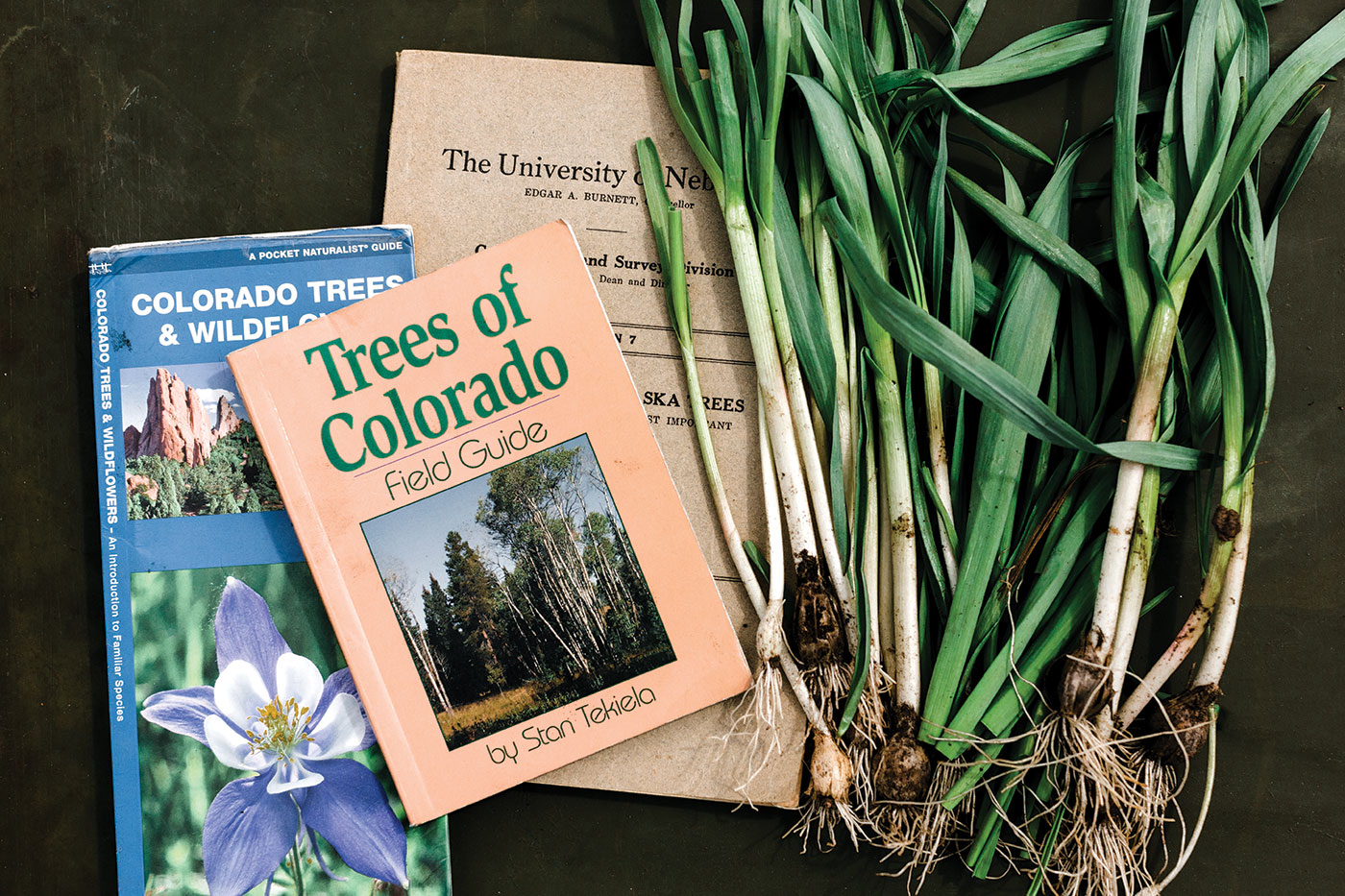Just after dinner, the sun dropped into the horizon like a burning, orange yolk, blanketing the sky in hues of pinks and yellows. The Sangre de Cristo Mountains rose in all directions, each peak sprinkled with snow that reflected the fading light. As dusk settled in, a chorus of coyotes announced their presence with a communal howl. A lone white horse watched me from a grove of trees stripped bare of their leaves and bark. After 10 years of city life I’d grown accustomed to the honking of horns and congestion of New York; here, I felt myself slipping into a different, distant world.
I was standing on the dirt path to the corral behind the guesthouse at the Medano-Zapata Ranch in Mosca, Colorado, taking it all in. It was a far cry from my evening commute home on a crowded Bronx-bound 6 Train, breathing in the stale air of a hundred commuters.
The guesthouse is just a few minutes’ ride from Great Sand Dunes National Park, where visitors can climb the steep ascent to the tallest sand dunes in North America and hike the nearly seven-mile Mosca Pass Trail through a winding, snowy traverse. The setting is serene, and it’s one that inspires contemplation, introspection and creativity.
With this backdrop in mind, the Zapata Ranch hosts retreats, educational talks and workshops centered around photography, horsemanship, conservation, yoga, foraging and ecology. All of this is certainly worth any traveler’s time, but the Zapata Ranch is also an active bison, cattle and horse ranch and nature preserve that sits on 103,000 acres. The ranch offers an opportunity for guests to ride on horseback through the preserve and to learn about the day-to-day operations of a working ranch—a vital lesson for anyone who picks up meat from the grocery without ever wondering how it arrived there. Zapata Ranch is close enough to Denver and Santa Fe, but far enough to feel distant from the world of concrete walls and overpasses.
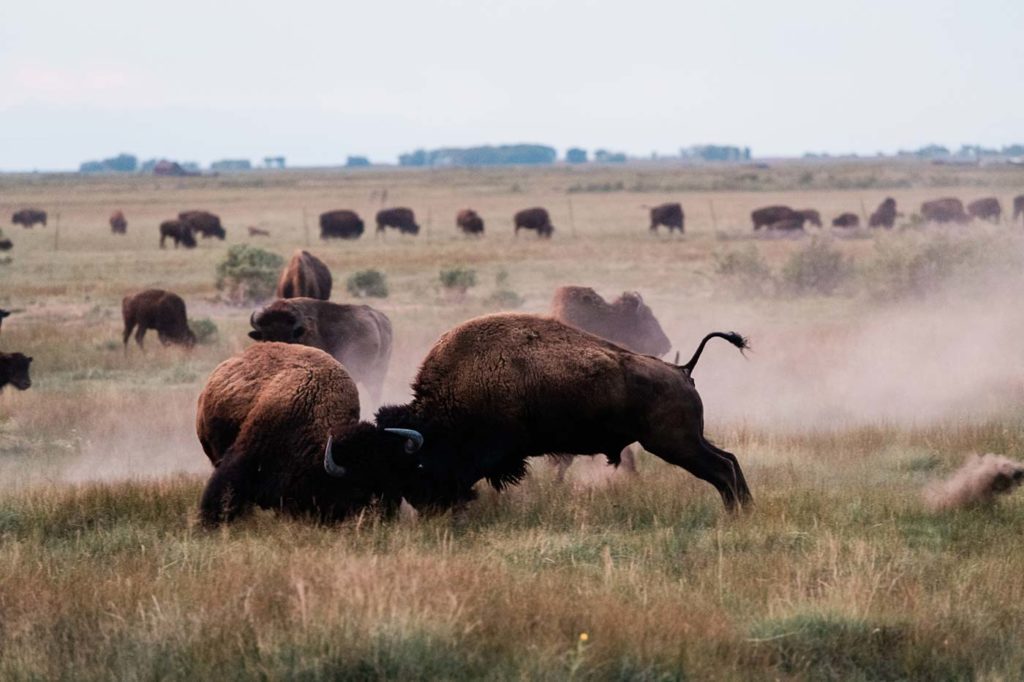
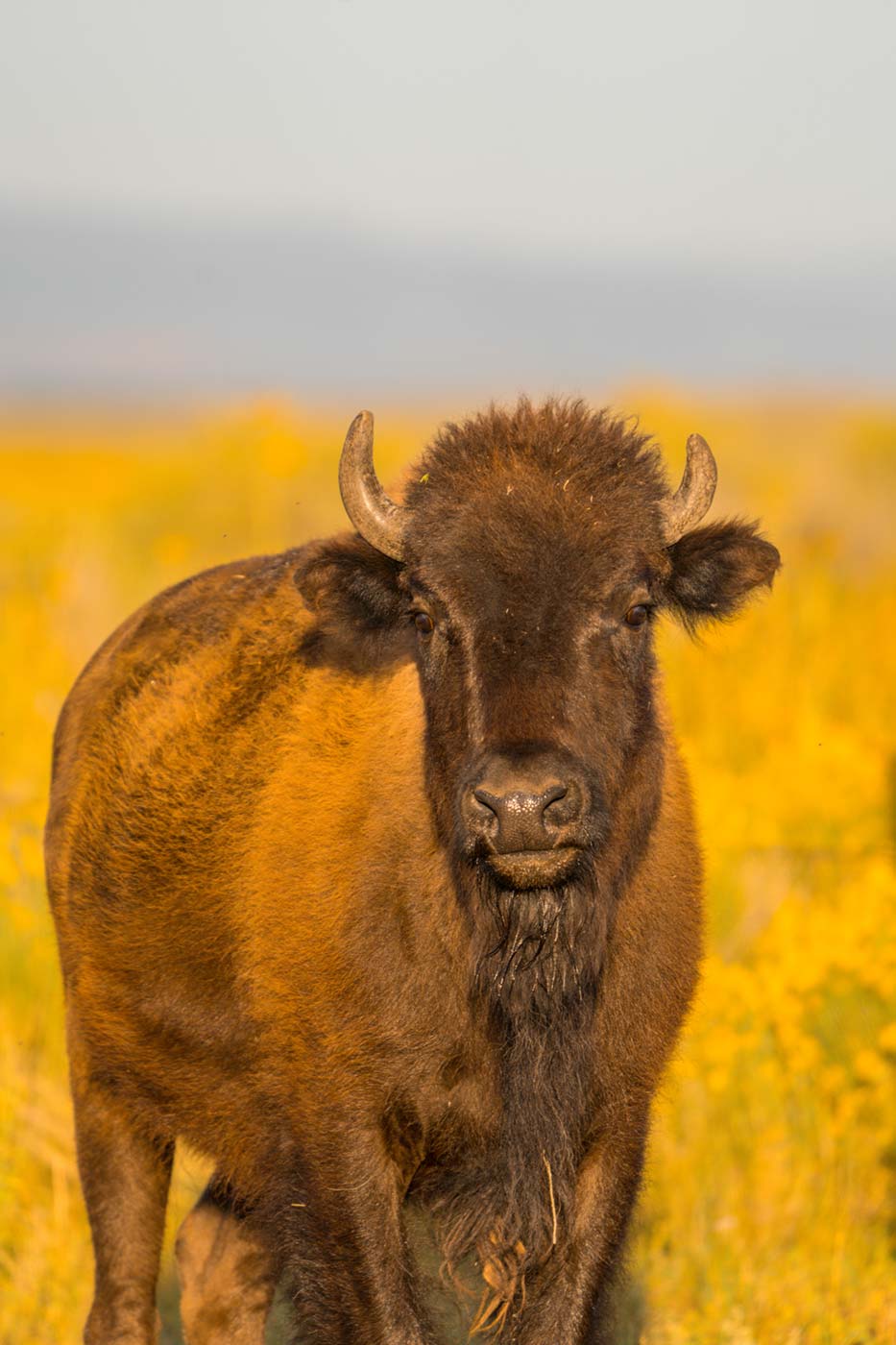
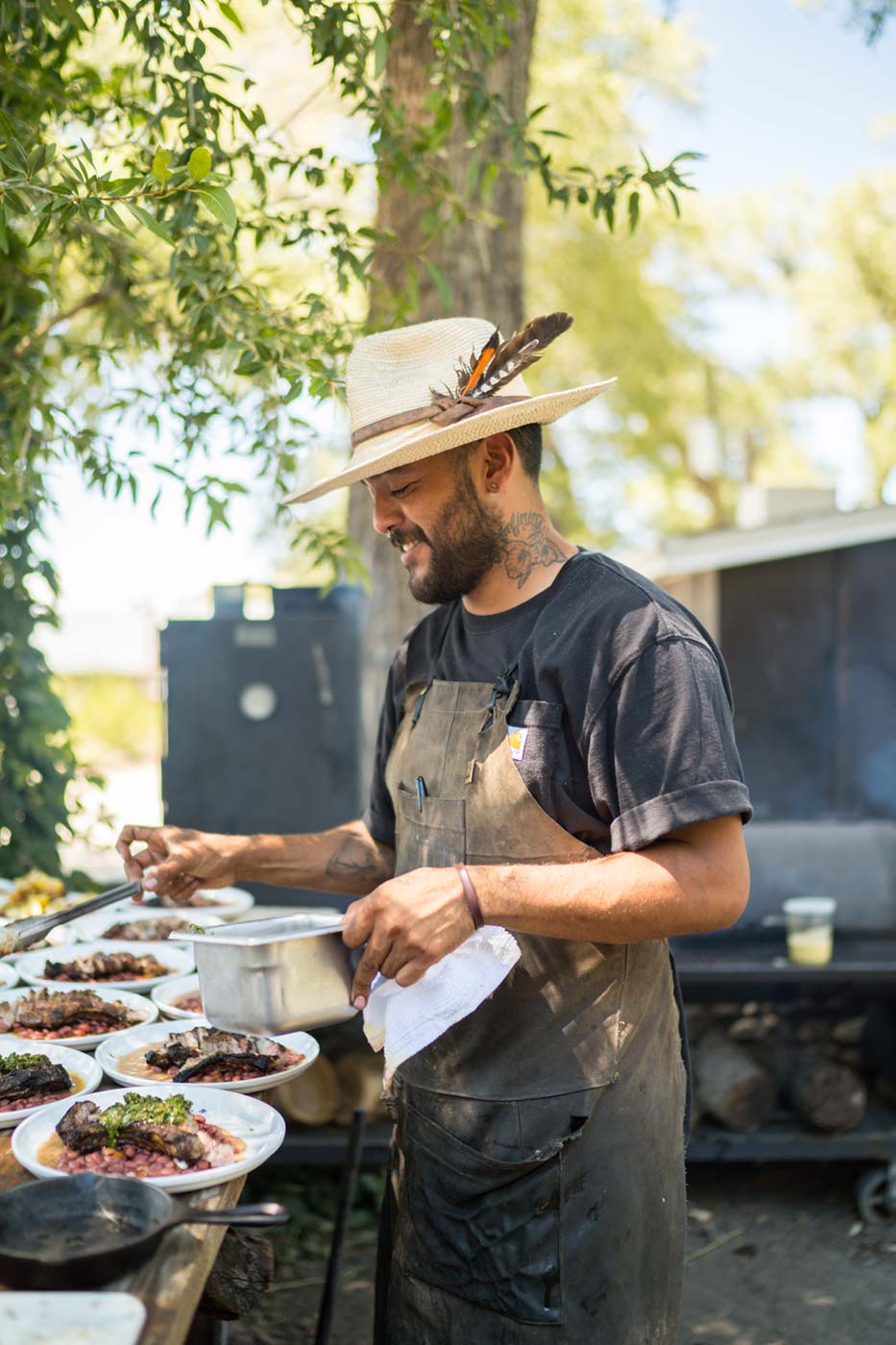
My partner, Leslie, and I arrived at the Zapata Ranch shortly before dinner. The dining room has three communal tables, where guests share meals, make introductions and eventually share travel stories over food and drink. During warmer months, meals are shared outdoors. I was immersed in a conversation when a dish was put before me: a kalbi-style beef, marinated in soy and ginger, served on a bed of fluffy white rice with a cooling cucumber salad bathed in vinegar and sesame oil. One bite was enough to know that this chef has serious chops; this dish could be served at the finest Korean restaurants. I had anticipated a traditional Western meal, so not only was this dish a pleasant surprise, it began to unravel my expectations of cowboy cuisine.
Chef Ivan Guillén is an executive chef for Ranchlands, the fourth-generation family ranching business that manages both the Zapata Ranch in Colorado and the Chico Basin Ranch in Colorado Springs. Ivan was the talented artist who cooked the satisfying and nourishing meals we ate during our stay. Ivan’s day begins early when the sun is still a soft glow in the east. After walking his dog and tending to the chickens, Ivan walks to the guesthouse kitchen, where he preps for the day. Every item on the menu is planned by Ivan and made from scratch, either the day before or the day it is cooked. Dinner is served to hungry guests promptly at 6pm, and Ivan returns to check on his chickens again around 8pm. It’s a long day—one that is reflective of all of the labor required on the ranch.
There was poetry in the responses that Chef Ivan provided to my questions. His cooking is inspired by nature and art. He likens flavors to colors, his dishes drawing from his palette of flavors with influences from around the world. Perhaps there is no better place for a chef than where he is now. A look in any direction reveals extraordinary beauty. Instead of mimicking a culinary hero, Ivan set out to form his own style, influenced by his travels and past working experiences. He typically hasn’t spent much time in one place, preferring to learn and move on to the next venture before he can become too comfortable. “I’ve thought of myself as a pirate taking gold as lessons from each ship,” he told me.
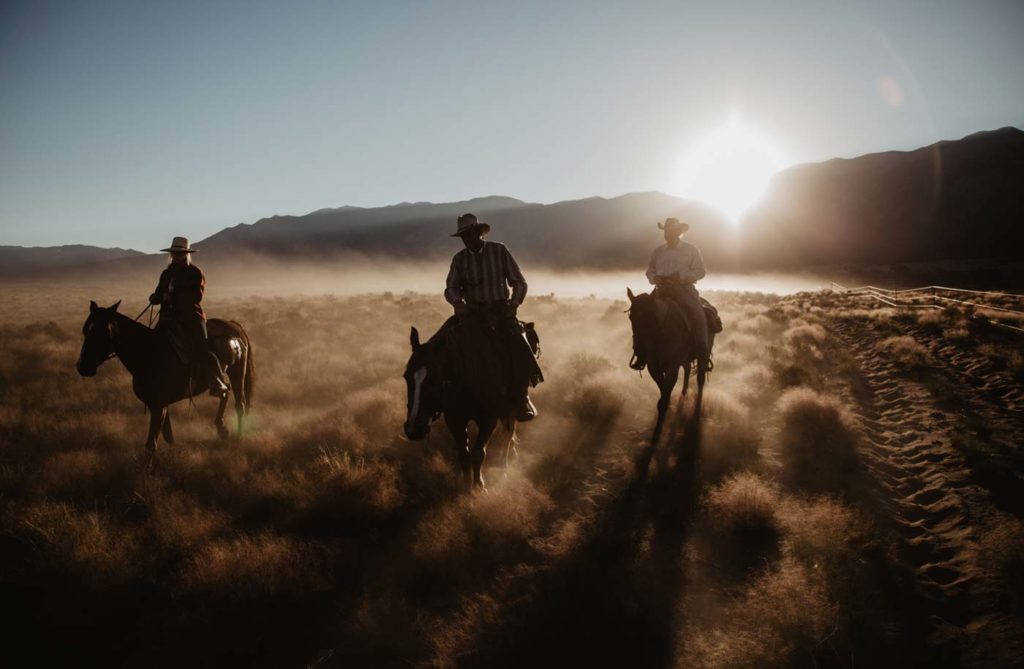
I came to the Zapata Ranch expecting a certain experience, influenced by the cowboy tales I’ve heard, Hollywood Western films and the twang of raspy crooners who pick at guitar strings. Surely, the food would reflect the cowboy cooking traditions that I conjured in my mind. But, when it comes to food at the ranch, Ivan says it best: “What exactly is Western cooking?” The American West has been altered and transformed by the many cultures that have inhabited the land: Indigenous peoples, American pioneers, Spanish colonists, Mexican migrants, gold prospectors and a host of people from around the world. Ivan’s own heritage influences his cooking. His family lives in the Mexican states of Veracruz and Michoacán, where Ivan ate food as a youth in the neighborhood outside of his relatives’ homes. In the way that his native culture’s food was altered by the blending of cultures over the years, so has food in the American West. And that diffusion of cultures is represented beautifully at the Zapata Ranch, where dishes are cooked with fire, with local Western ingredients, using Italian and French techniques, by a Mexican American culinary artist.
While the cuisine was surprising, Zapata’s stance on conservation, sustainability and regenerative practices seemed as natural to this place as the landscape itself. Zapata manages the wild bison herd on behalf of The Nature Conservancy, which owns the land. Bison genetics are managed and researched to ensure the health and resiliency of the herd. The ranch manages a smaller cattle herd that mimics the natural patterns of the bison to regenerate and improve pasture, soil and ecological health.
Guests of the ranch are highly encouraged to participate in the numerous conservation and education programs and workshops run by the ranch. Ivan explained that while he uses bison and cattle from the ranch in his dishes, he only does so one or two days a week. It wouldn’t be sustainable to use bison in every meal. Instead, Ivan and his crew bake their own bread and cook chicken, pork and vegetables to fill the gap of red meat. He sources most of what he cooks from farms and producers in the valley.
On the second evening of our stay, after 12 hours of hiking, a heavy cast-iron pan was set down on the dining table. Steam rose off of the pan’s contents: rich flakey biscuits cooked in duck fat. They were the perfect utensil for sopping up a bowl of fish chowder that had thick chunks of arctic char swimming in a purée of carrots and peas. At breakfast, we had respectfully waited until every guest received a plate—a common courtesy. But after a day of trekking up steep inclines or riding on horseback through the preserve, it was every guest for themselves. A bowl of Brussels sprouts was passed around. The miniature cabbages were expertly browned and roasted with chili oil, giving them a kick that jolted our brains awake with a flood of endorphins. A refreshing salad of mixed greens and julienned apples balanced the heat of the chilis. When every crumb of biscuit was devoured, and every bowl of chowder was dry, the chef brought out a cheesecake, made with gorgonzola and a crumbling cookie crust. The meal sent us off to bed in a state of bliss.
Whether you seek an education, solace or a world-class meal, you’re sure to find it at the Zapata Ranch. As far as travelers go, I’m one of the fortunate ones. I have indulged in incredible meals from the crowded medinas in Morocco to the packed night markets in Taiwan. The greatest meals live on as a ghost in my memory, a sensory reminder of the special places where I’ve planted my feet for a temporary moment in time. The Zapata Ranch has reserved a place in those memories, in part for its sensual beauty—found in the snow-capped mountains, the midnight hooting of an owl and in the frozen breath of a mare on a frosty evening. But equally for the incredible meals shared with like-minded travelers, which nourished our souls after long days on the ranch.

